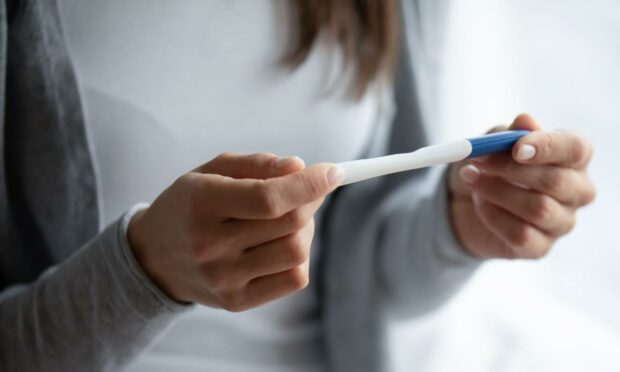NHS Fife has been named the Scottish health board with the highest rate of teenage pregnancy for the fourth year in a row, while national figures dropped to the lowest levels since records began.
New data released by Public Health Scotland revealed NHS Fife recorded 35.1 teenage pregnancies per 1,000 women, though this figure fell from 36.7 in 2018.
NHS Tayside came second on the list, with 31.5 per 1,000 compared with 33.5 in 2018.
The 2019 Scottish national average is 27.7 per 1,000 women, down from 29.6 the previous year. In 1994, this figure stood at 54.7.
When comparing council areas, Dundee City has the second highest rate, with Fife coming fifth.
‘Targeted approach’
Dr Lorna Watson, consultant in public health medicine and child health commissioner for Fife, said: “Over a number of years, Fife has taken a targeted approach to addressing areas with high levels of teenage pregnancy.
“In the last decade, the rates of teenage pregnancy in Fife have reduced significantly, while the numbers of terminations have also reduced over this time.
“Further work continues to be taken forward by Fife’s Sexual Health and Blood Borne Viruses group, in partnership with education and relevant partner agencies.
“This aims to support young people to keep themselves safe, avoid sexually transmitted infections and prevent unintended pregnancies, especially where higher rates may be more likely and for those in need of more support.
“Ongoing scrutiny of this data will help inform these actions going forward.”
Declining rates
The rate of teenage pregnancy has been steadily declining since recording began in 1994.
In 2019 there were 3,814 teenage pregnancies across Scotland, compared with 7,993 in 2010.
Of the 3,814 pregnancies, 219 were in the under 16 and 1,241 were in the under 18 age group.
Therefore, under 16s accounted for 5.7% of pregnancies and under 18s for 32.5%. The majority (67.5%) of teenage pregnancies were to those aged 18 and 19 years old at time of conception.
2019 marks the 12th year in a row that rates of teenage pregnancy have fallen.
Between 1994 and 2007, the rates varied but were generally much higher than current levels.
The teenage pregnancy rate is currently at its lowest recorded level since reporting began.
The report noted: “While this may be due to various interventions such as Scotland’s ‘Pregnancy and Parenthood in Young People Strategy’, it has also been suggested that changing lifestyle factors such as reduced risk-taking behaviour and reduced alcohol consumption may have contributed to the decline.”
2019 also became the first year where terminations surpassed deliveries in under 20s, with 50.3% opting to end their pregnancy.
Deprivation
Rates of teenage pregnancy varied depending on where women lived. The areas of highest deprivation in Scotland had pregnancy rates more than four times higher than the least deprived areas (52.6 compared to 11.8 per 1,000).
Despite this, the gap in teenage pregnancy rates between the most and least deprived areas continues to narrow.
While rates have generally reduced across all levels of deprivation in the last 10 years, the report found rates in the most deprived areas have fallen more rapidly.
